Great box ing and great art confront each other in Liguria, in an exhibition that brings from April 27 to November 7, 2021, to the CAMeC - Modern and Contemporary Art Center in La Spezia, an important unpublished work by Jean-Michel Basquiat (New York, 1960 - 1988) that evokes a legendary boxing match, one of the most famous matches in history, the one that took place on February 25, 1964, in Miami Beach between Sonny Liston (Charles L. Liston; Sand Slough, 1932 Las Vegas, 1970) and Cassius Clay (Louisville, 1942 - Scottsdale, 2016).
Entitled Clay vs. Liston. Basquiat and Unpublished Works from the Cozzani Collection, the exhibition, curated by Eleonora Acerbi and Cinzia Compalati, takes the form of a project to enhance the permanent collections of the CAMeC and the rich heritage that characterizes them, starting with a prestigious loan, that of Basquiat’s pastel Clay Liston, from a private collection, dedicated precisely to the famous encounter. The exhibition consists of two autonomous and joint sections: the first presents a selection of previously unseen works from the Cozzani collection (which constitutes the main nucleus of the CAMeC) and the second is entirely dedicated to Basquiat’s Clay Liston, for which an entire room and a wide digression are reserved, with also a video made for the occasion by Sara Bonatti and Saul Carassale, aimed at evoking the moments that preceded the match (such as the encounter between Cassius Clay and the Beatles), as well as the encounter itself and the resonance it had even in the following years. The link between the work of the famous American artist and the others gathered for the occasion is very close, and thanks to this exhibition it will be able to be reunited with the collection to which it belonged, the sylloge composed over time by the La Spezia couple Giorgio and Ilda Cozzani and in 1998 donated to the city and CAMeC.
For the occasion, the CAMeC room housing Basquiat’s pastel was transformed into a... ring: in fact, the room has been decorated with red and blue stripes that evoke the arena in which the boxers compete (the stripes simulating the ropes of the ring are life-size to give the audience the feeling of being on the theater of the encounter and, following a suggestion to be read in Basquiat’s pastel, to convey the idea that the ring is a kind of cage), along which the chronology of the events connected to the work and the encounter unfolds.
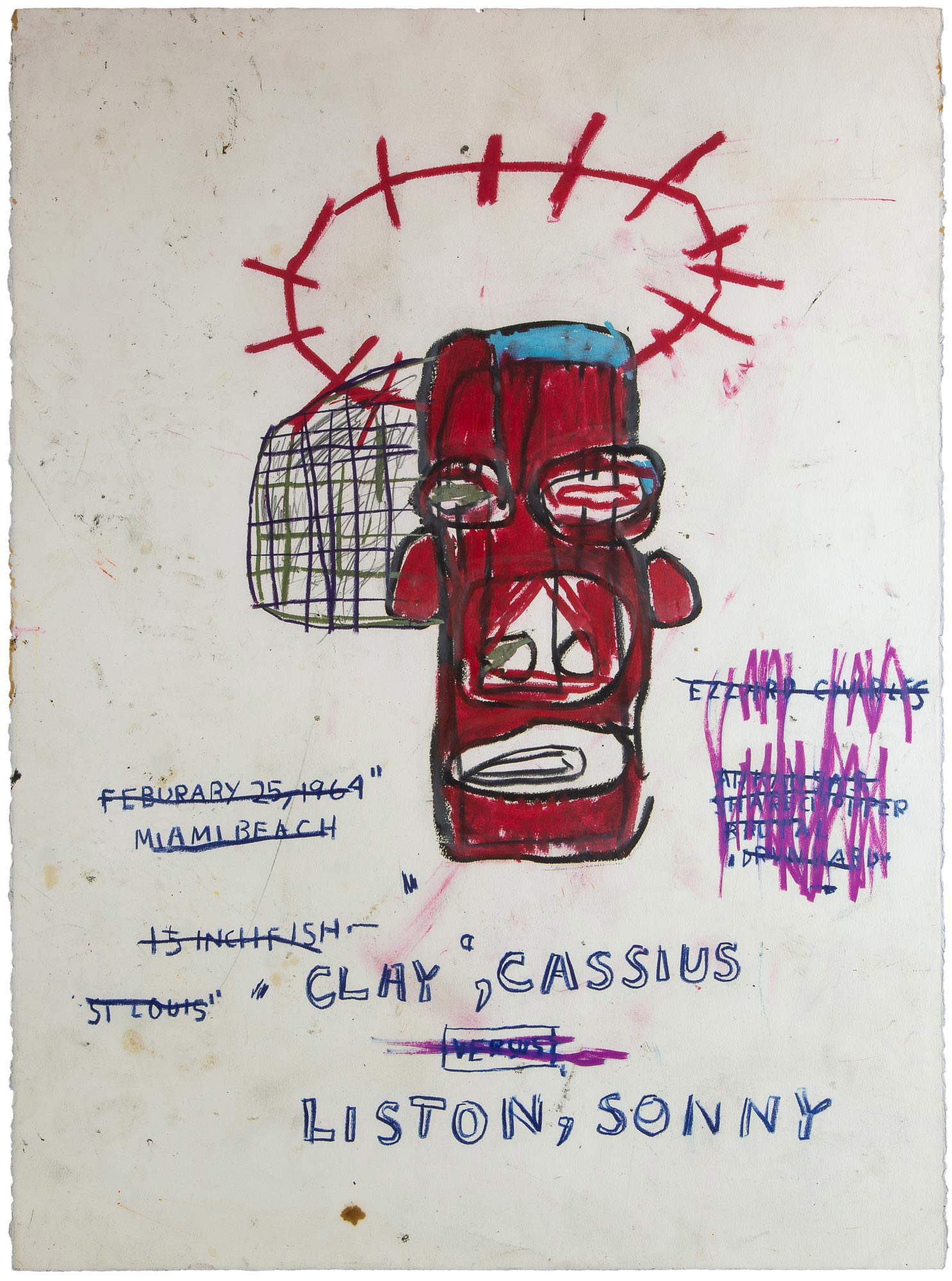 |
| Jean-Michel Basquiat, Clay Liston (1983; pastel on paper; Private collection) |
On February 25, 1964, at the Convention Hall in Miami Beach, the first confrontation between two boxing giants, Sonny Liston (Sand Slough, 1932 Las Vegas, 1970) and Cassius Clay (Louisville, 1942 - Scottsdale, 2016), for the world heavyweight title took place: it was one of the most anticipated, followed and controversial matches in the history of the sport. Indeed, in the weeks that followed it carried with it a trail of a thousand controversies: for example, there was much discussion about the extent of the injury that forced Liston to abandon the bout, there were accusations of match-fixing (the outcome of the bout was allegedly piloted to favor one side of the betting world) and much more. The work on display at CAMeC, created in 1983 by the already famous Basquiat, restores the artist’s interpretation and reading of it, nearly two decades after the celebrated bout, which continued to fascinate fans and others (Basquiat, as is well known, was a big fan of boxing). The match, for the record, was won by Cassius Clay by technical knockout in the seventh round, despite Sonny Liston being the big favorite: Believed to be the greatest heavyweight since Joe Louis (some of Liston’s defeated opponents went so far as to boast that they had managed to finish the bout against him on their feet), Liston appeared on the eve of the confrontation with only one career defeat, suffered ten years earlier, and with the title of world champion, despite the fact that he was not particularly well-liked by the public and the boxingestablishment, so much so that he went down in history as “the champion nobody wanted,” partly because of his life of excesses and constant in and out of jail.
Lambiente that houses the work, as mentioned, was specially designed to reconstruct the mythography of the fight: in a dedicated space, in which blue and red bands recall the ring fence, around Jean-Michel Basquiat’s pastel is a chronology that traces the events coeval with and following the extremely popular bout, which entered the collective imagination and memory, and the numerous cues and quotations it generated in music, literature, cinema, and television production. Bonatti and Carassale’s video intervenes to evoke these suggestions.
Lopera Clay Liston presents an effective compendium of the great New York graffiti artist’s stylistic signature and recurring themes: a crown of thorns encircling the face not only of the victor (represented through the stylization of an African-American face) but of the racial question, which here becomes a major theme (not least because both protagonists of the encounter were black: it will be noted how Basquiat also intervened, with his typical erasures, on the word “versus,” almost in an attempt to unite the two contenders, divided by sport and public affection, but brought together by their African-American origin, and to elevate the black race to a sacred icon); the visceral passion for boxing as a direct metaphor for the daily and animal struggle for survival; the very strong need to combine image and writing on which he intervened violently as if to vent an intimate anger that gave him no peace.
In addition, thanks to the collaboration with the historic La Spezia boxing association Sport Club Virtus 1906, the exhibition welcomes some objects and memorabilia representing the “noble art”: among others, the gloves that belonged to the Italian champion Bruno Visintin, (La Spezia, 1932 - 2015), bronze medalist at the 1952 Helsinki Olympics in the super lightweight and 1951 European gold medalist in the lightweight, and then again the skipping rope, a boxer’s faithful training companion, as well as a mighty, lived-in and now disused ring rope.
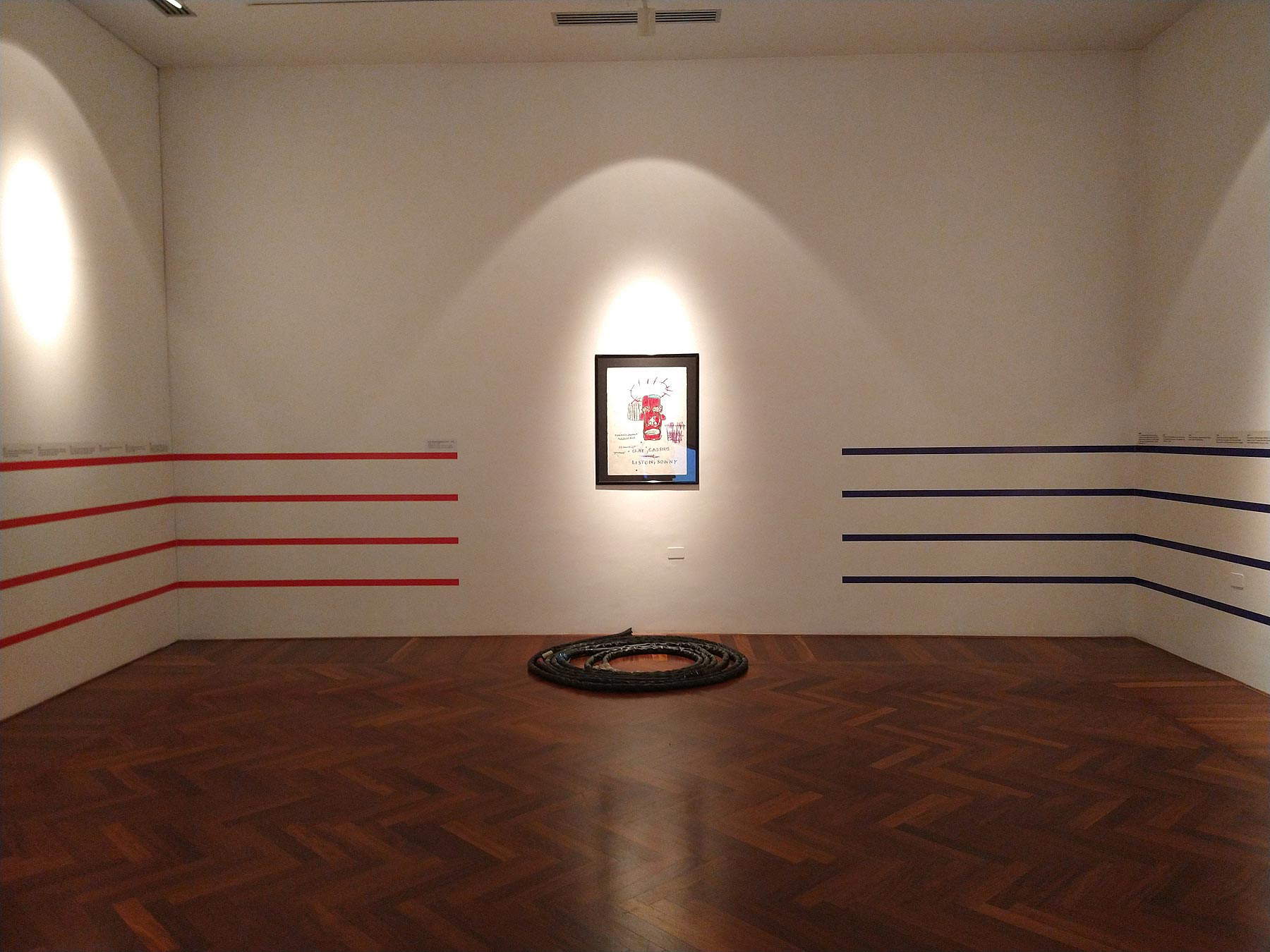 |
| Exhibition Hall |
 |
| Exhibition Hall |
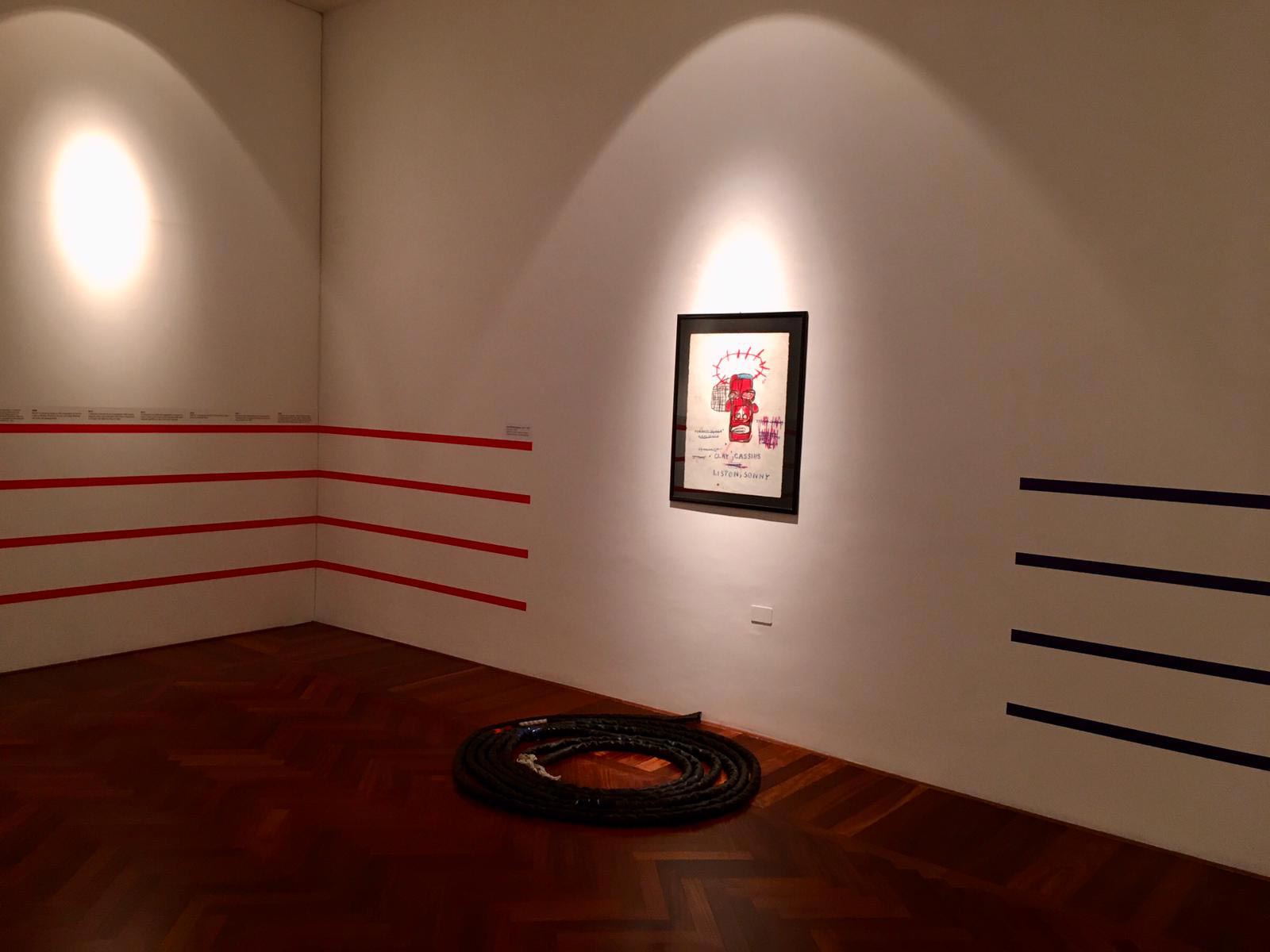 |
| Exhibition Hall |
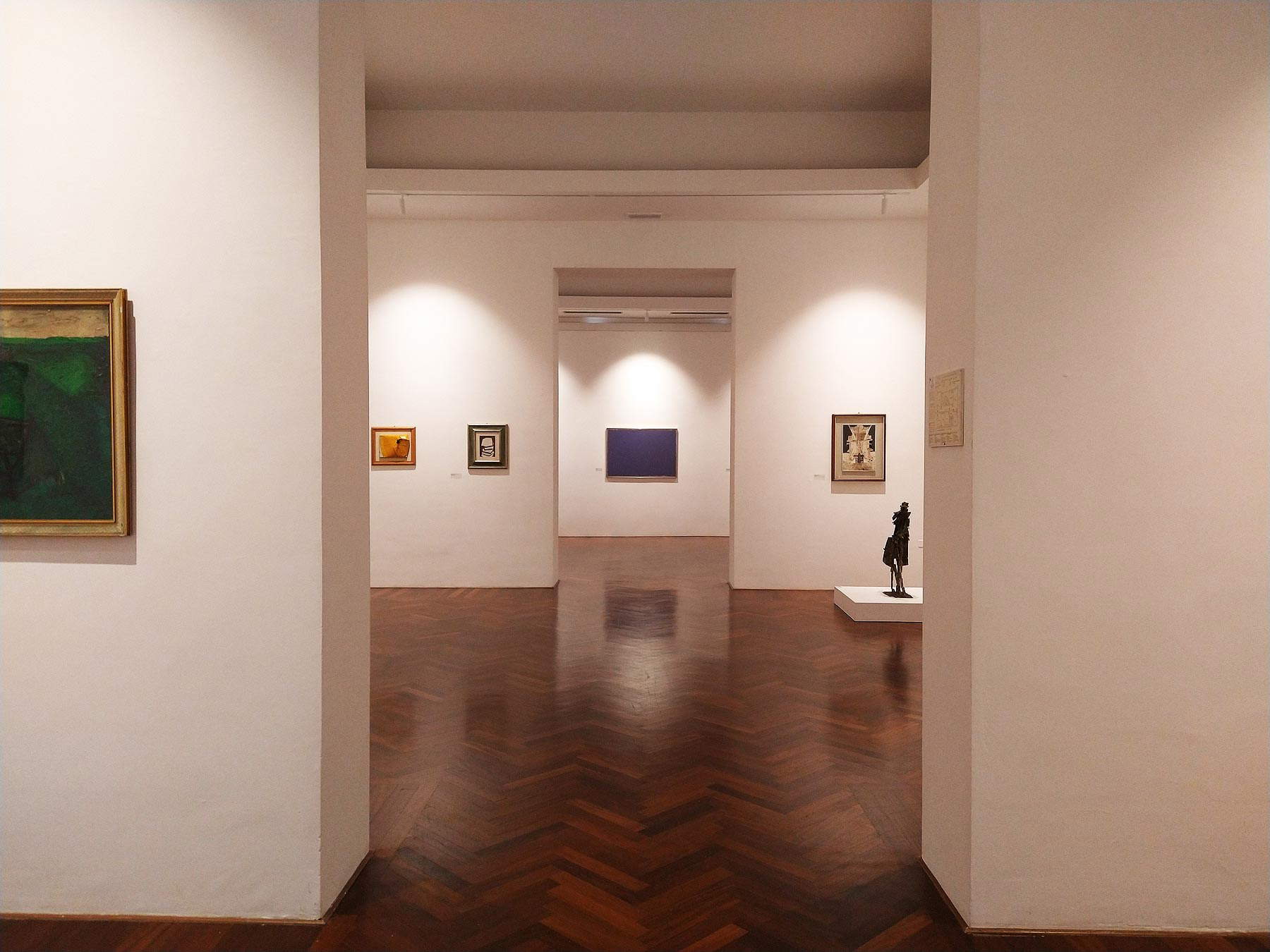 |
| Exhibition Hall |
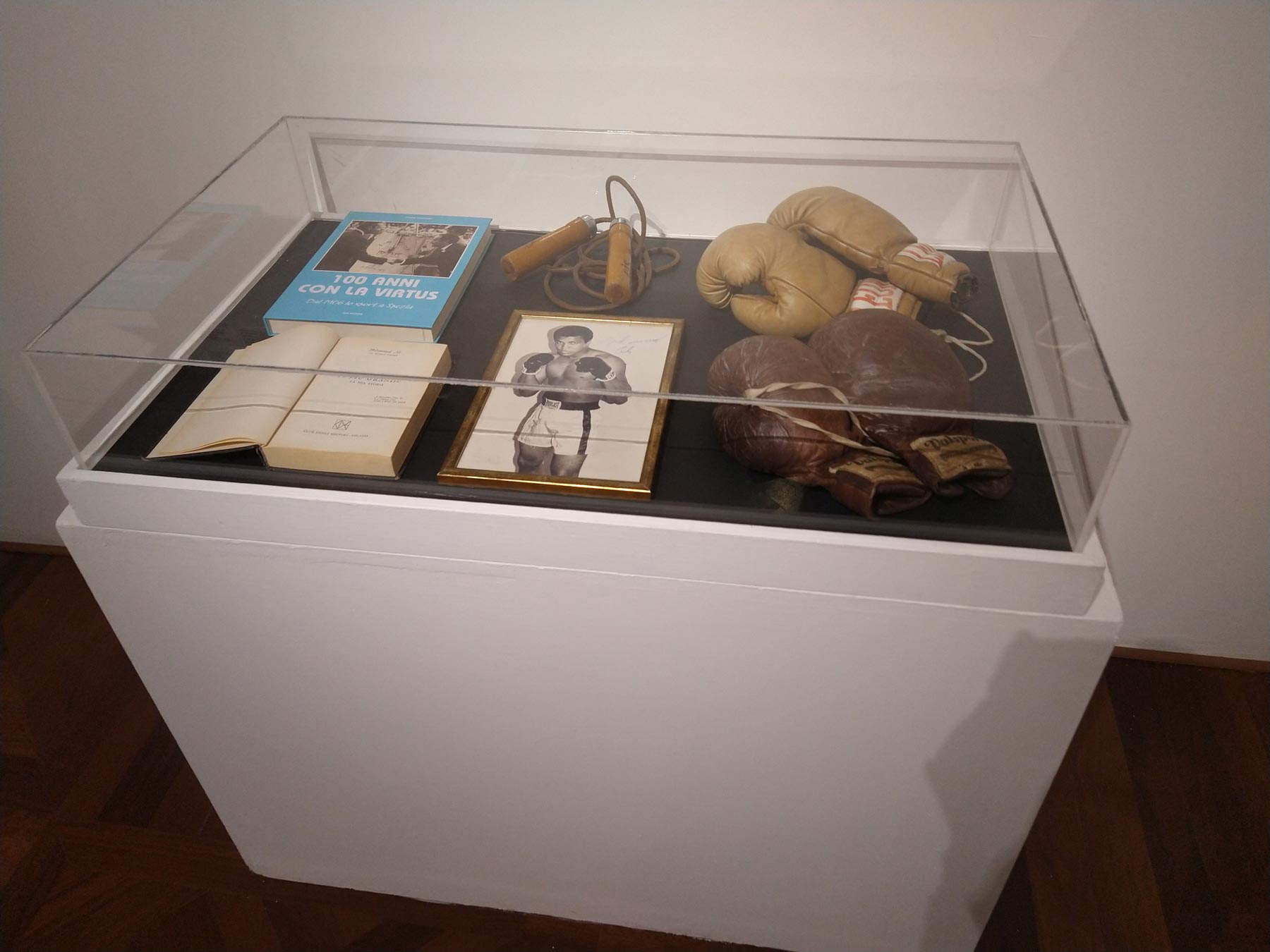 |
| Exhibition Hall |
The other rooms offer a selection of more than forty works by as many authors, drawn from the Cozzani collection and distinguished by the novelty of the exhibition: in fact, these are unpublished works, which have never left the deposits after their donation and entry into the permanent collections of the CAMeC.Lexcursus proposed by the curators aims to reveal the documentary significance of the collection and the eclectic, omnivorous, encyclopedic and often pioneering taste of its creator. Giorgio Cozzani flanked his respected medical profession (he was chief dermatologist at the Hospital of La Spezia) with a passion for art, devoting himself in particular to contemporary international production. Having begun collecting in the 1950s, having become passionate about art following a visit to the Venice Biennale, he came to the attention of the environment as an inexhaustible and wandering collector, regularly visiting the major events, starting with the Venice Biennale itself and Documenta in Kassel, and frequenting the most important galleries not only in Italy but also in London and Paris. It is to his curiosity and insight that we owe the composition of a singular collection, characterized by the absence of overt passions and binding predilections, but rather sustained by an open and far-sighted curiosity, the need for constant updating and timely recording. In the end, the result is a vast collection: more than one thousand hundred works, including sculptures, paintings, graphics, photography and “other” outcomes of the visual arts of the 20th century.
The exhibition therefore intends to rediscover and give voice to this distinctive nomadism in research and choice. It therefore starts from the 19th century, with a landscape by Niccolò Cannicci (Florence, 1846 1906), an important Tuscan artist in the orbit of the Macchiaioli, and from the early 20th century, with a lunge at Cozzani’s interest in Ligurian artists. In this first section, a singular view of the center of La Spezia, by Giuseppe Caselli (Luzzara, 1893 - La Spezia, 1976), stands out in particular, restoring an image of a Spezia of the 1930s that no longer exists. In the same room, there appear an intimate domestic interior with two women intent on sewing, a work by Vincenzo Frunzo (La Spezia, 1910 - Rome, 1999), a landscape by Augusto Magli (La Spezia, 1890 - 1962), an essay of the refined Informal by Giancarlo Calcagno, a canvas belonging to the cycle of Forms by Francesco Vaccarone (La Spezia, 1940), an everted work by Mauro Fabiani, indebted to Spatialist research, an interesting urban nocturne by Salvo (Salvatore Mangione; Leonforte, 1947 Turin, 2015).
The exhibition continues with works by Italian artists who are exponents of the most diverse fields of research (among others Sergio Dangelo, Mimmo Germanà, Bruno Mancinotti, Plinio Mesciulam, Silvio Pasotti, Piero Pizzi Cannella, Emilio Scanavino, Claudio Verna) and with works by foreign authors, some of them well known outside the national borders but rarely found in Italian public collections, documented here thanks to the collector’s allacumen and curiosity (among others Eduardo Alcoy i Lázaro, Frank Dale, Martin Disler, Joel Fisher, Cristina Iglesias, Jean Messagier, Juan Muñoz, Stephen Rosenthal, Edward Ruscha, Hervé Télémaque, Franz West). Of particular note are a bronze by Belgian Olivier Strebelle (Uccle, 1927 - Brussels, 2017), a singular sound sculpture by Joe Jones (New York, 1934 - Wiesbaden, 1993), a fine wood sculpture by Jesús-Rafael Soto (Ciudad Bolívar, 1923 Paris, 2005) with its typical vertical lines, as well as a youthful oil on canvas by the great George Condo (Concord, 1957), made by the 29-year-old artist in 1984 (further demonstrating Cozzani’s “flair” for recognizing artists’ talent). In consonance with the exhibition hosted on floor 2, the Project room hosts a selection of Unpublished from the new donations, works acquired through the generous donations of artists, their heirs and collectors, exhibited for the first time since the opening at CAMeC.
The exhibition is open Tuesday through Sunday from 11 a.m. to 6 p.m. Closed Mondays. Saturday and Sunday reservations are required as per government regulations. Tickets: full 5 euros, reduced 4 euros, special reduced 3.50 euros. For info, visit the CAMeC website.
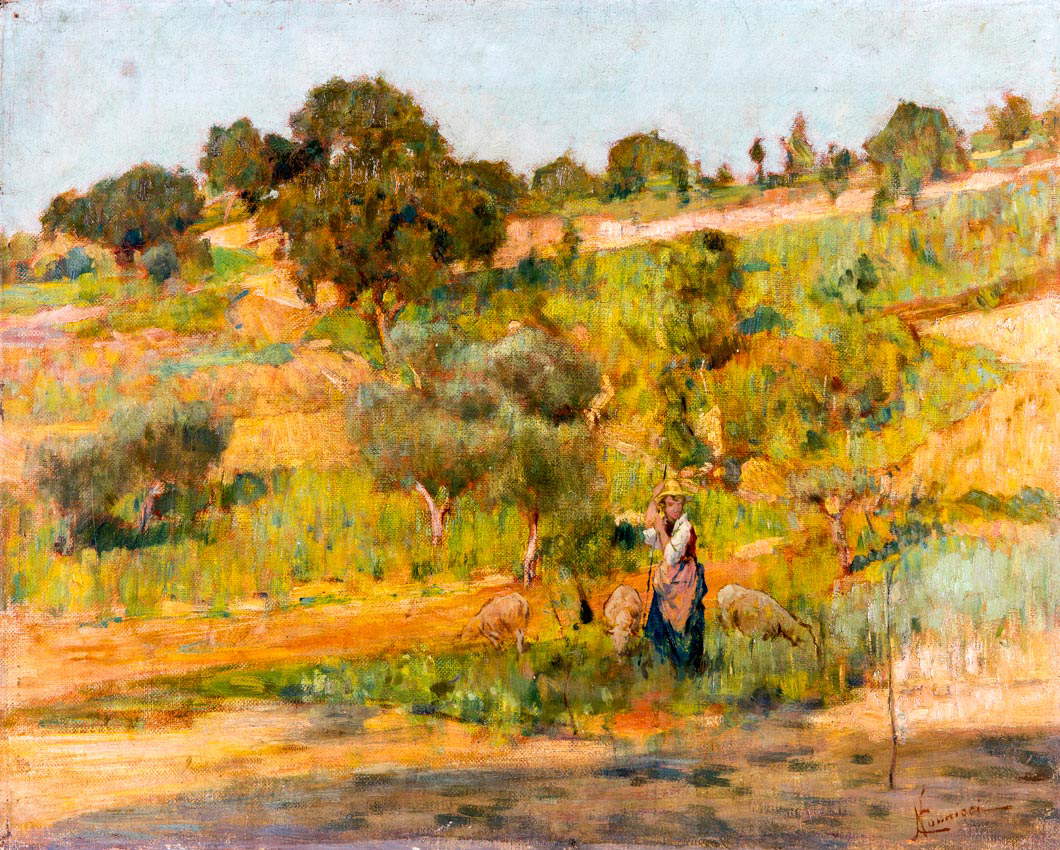 |
| Niccolò Cannicci, Grazing (s.d.; oil on canvas; La Spezia, CAMeC) |
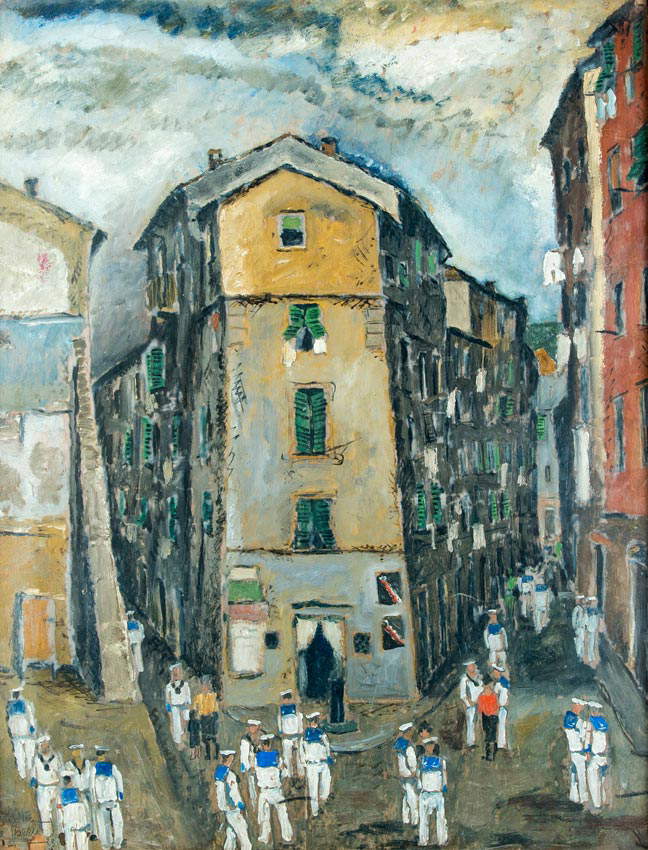 |
| Giuseppe Caselli, Foreshortening of La Spezia (1933; oil on panel; La Spezia, CAMeC) |
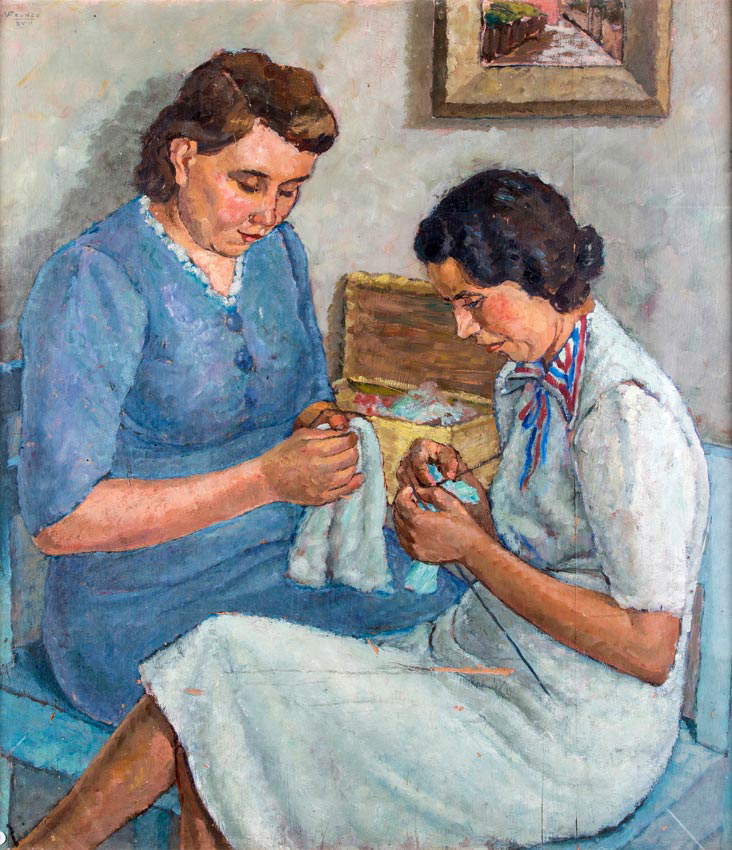 |
| Vincenzo Frunzo, Women Working (1940; oil on panel; La Spezia, CAMeC) |
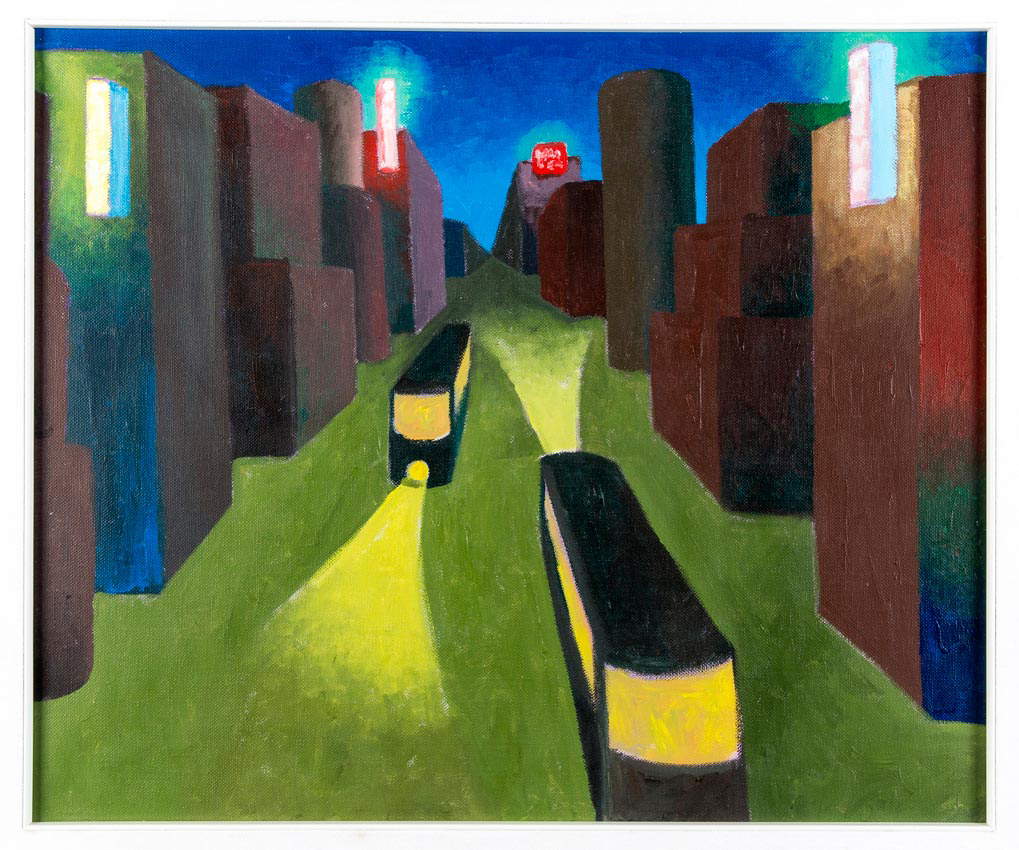 |
| Salvo, Urban Landscape (1983; oil on canvas; La Spezia, CAMeC) |
 |
| Olivier Strebelle, The Preacher (1961; bronze; La Spezia, CAMeC) |
 |
| Claudio Verna, A 144 (1972; acrylic on canvas; La Spezia, CAMeC) |
 |
| Frank Dale, Untitled (1983; pencil and pastel on paper; La Spezia, CAMeC) |
 |
| Joe Jones, Sound sculpture (1974; wood, iron, aluminum, nylon wire, battery, mammoth clamped electrical plate; La Spezia, CAMeC) |
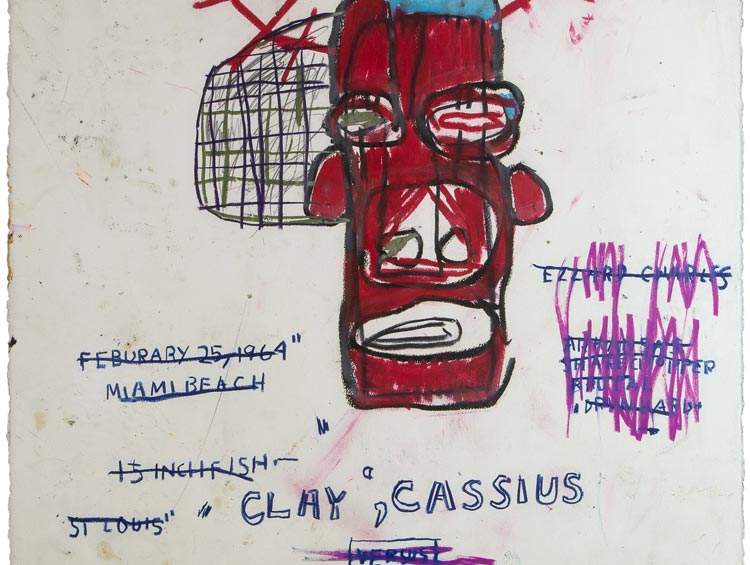 |
| La Spezia, museum becomes a ring to welcome an unseen Basquiat |
Warning: the translation into English of the original Italian article was created using automatic tools. We undertake to review all articles, but we do not guarantee the total absence of inaccuracies in the translation due to the program. You can find the original by clicking on the ITA button. If you find any mistake,please contact us.